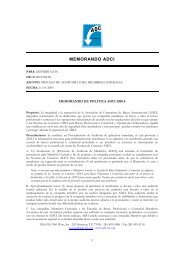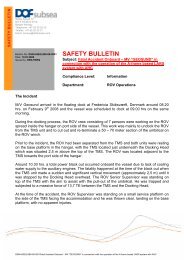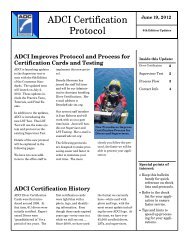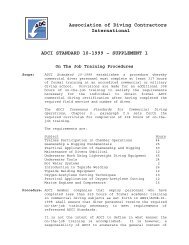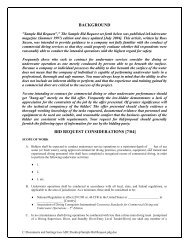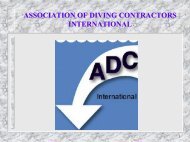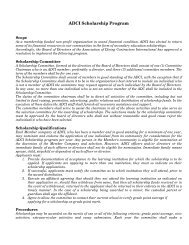DIRECTIVE NUMBER: CPL 02-00-151 EFFECTIVE DATE ... - OSHA
DIRECTIVE NUMBER: CPL 02-00-151 EFFECTIVE DATE ... - OSHA
DIRECTIVE NUMBER: CPL 02-00-151 EFFECTIVE DATE ... - OSHA
You also want an ePaper? Increase the reach of your titles
YUMPU automatically turns print PDFs into web optimized ePapers that Google loves.
line-tended from the surface when in the water or that the SCUBA diver be<br />
accompanied by, and in continuous visual contact with, another diver during<br />
the diving operation.<br />
NOTE: While line-tending the SCUBA diver from the dive location is<br />
considered preferable to “buddy diving,” it is recognized that “buddy<br />
diving” is an accepted practice. The safety advantage of having two divers<br />
in the water tending each other (“buddy diving”) is lost if they cannot<br />
maintain continuous visual contact; without visibility, divers cannot tend<br />
each other adequately.<br />
c. 29 CFR 1910.424(c)(3). When diving is conducted in an enclosed or<br />
physically confining space, a diver shall be stationed at the underwater point<br />
of entry to assist in tending the diver in the space.<br />
NOTE: The diver stationed at the underwater point of entry is required in<br />
addition to any standby diver at the dive location.<br />
d. 29 CFR 1910.424(c)(4) and (c)(5). Each SCUBA diver is required to have:<br />
(1) a diver-carried reserve breathing-gas supply that consists of a manual<br />
reserve (J-valve), or (2) an independent reserve cylinder that has a separate<br />
regulator or that is connected to the underwater breathing apparatus (see 29<br />
CFR 1910.424(c)(4)). The valve of the reserve breathing-gas supply must<br />
be in the closed position prior to the dive (see 29 CFR 1910.424(c)(5)) to<br />
ensure that the air reserve will not be depleted inadvertently during the dive.<br />
NOTE: A Spare Air ® bottle, or equivalent device, that is attached positively<br />
to the diver by a suitable line (so that the bottle is not lost if dropped) is<br />
sufficient as an independent reserve cylinder, provided that it meets the<br />
emergency air volume requirements for the dive profile. Spare Air ® is the<br />
trade name for a small, high-pressure air bottle with an attached breathing<br />
regulator that is designed for use as an emergency-air source.<br />
3. Commercial SCUBA air diving with one diver in the water requires a minimum<br />
of three dive-team members: a designated person-in-charge (DPIC) (see 29<br />
CFR 1910.410(c)), a standby diver (see 29 CFR 1910.424(c)(1)), and a linetended<br />
diver (see 29 CFR 1910.424(c)(2)). Commercial SCUBA diving with<br />
two divers in the water requires a minimum of four dive-team members: a<br />
DPIC (see 29 CFR 1910.410(c)), a standby diver (see 29 CFR 1910.424(c)(1)),<br />
and two divers (see 29 CFR 1910.424(c)(2)).<br />
NOTE: Additional guidance regarding minimum dive-team requirements is<br />
provided in Appendix A, Questions #2 and #3, of this instruction.<br />
NOTE: In establishing the number of dive-team members required for a dive,<br />
proper consideration must be given to 29 CFR 1910.421(d) Planning and<br />
assessment, 29 CFR 1910.421(e) Hazardous activities, and 29 CFR<br />
1910.422(b)(3). This latter provision requires employers to provide a means to<br />
29


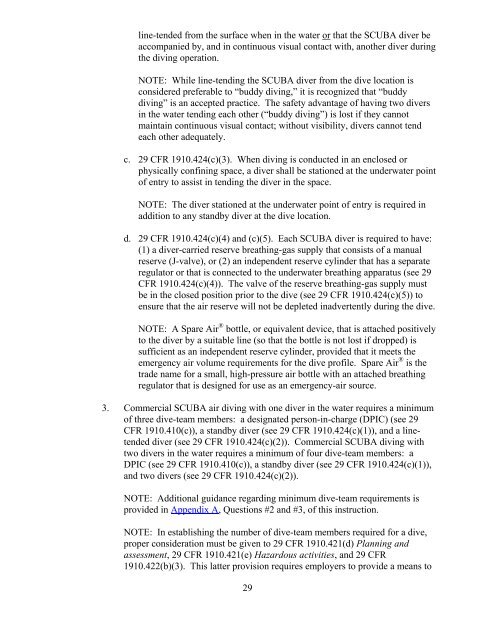
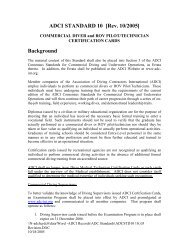
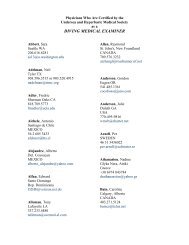
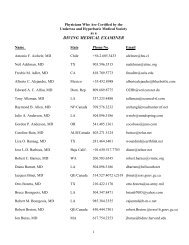
![SOLICITUD MEMBRESIA ASOCIADO [Rev 06/08] - Association of ...](https://img.yumpu.com/48291988/1/190x245/solicitud-membresia-asociado-rev-06-08-association-of-.jpg?quality=85)

